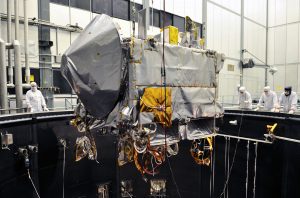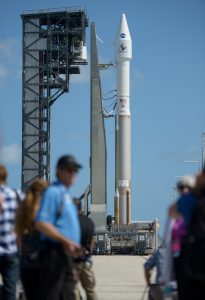
Washington, Sep 7 (EFE).- The US National Aeronautics and Space Administration (NASA) is all set to launch the OSIRIS-REx space probe, atop an Atlas V rocket on Thursday morning, on a seven year mission to the asteroid Bennu and back, in order to understand our Solar System’s infancy.
The probe, whose acronym stands for Origins, Spectral Interpretation, Resource Identification, Security, Regolith Explorer spacecraft (OSIRIS-REx), aims to reach the asteroid, collect samples of the asteroid’s surface with its robotic arm and bring them back to Earth for further analysis.
The principal investigator of the mission, Dante Lauretta, said this week “The primary objective of the mission is to bring back 60 grams of pristine carbon-rich material from the surface of Bennu,” and “We expect these samples will contain organic molecules from the early solar system that may give us information and clues to the origin of life.”

Bennu, approximately 500 m wide and traveling at about 100,000 km per hour, has been selected by NASA as the target of this mission because of its primitive asteroid condition, in which the surface is covered with materials similar to those that predominated during the beginning of the solar system’s formation.
The OSIRIS-REx probe is expected to arrive at the asteroid in 2018 for mapping the asteroid in detail, calculating its composition, and measuring its movement, among other things, before collecting the samples (at least 60 gram of material)and bring them back to earth, which is expected in September 2023.
This is the first NASA mission in which a probe is sent to collect samples from an asteroid and take them back to Earth, while a decade ago, the Japan Aerospace Exploration Agency launched similar missions called Hayabusa and Itokawa.
Mainly composed of carbon and possibly silicates which were altered by the presence of water, Bennu has some very similar materials to those at the beginning of the solar system’s formation, as it was not affected by significant heating, as it’s orbit is far from the Sun.
Located about 480,000 km from Earth, Bennu is considered one of the closest asteroids to our planet, since the large majority are in the so-called main belt between Mars and Jupiter. EFE
